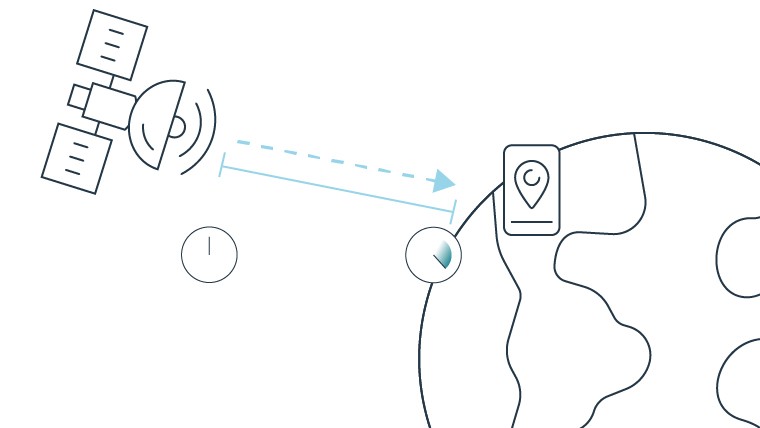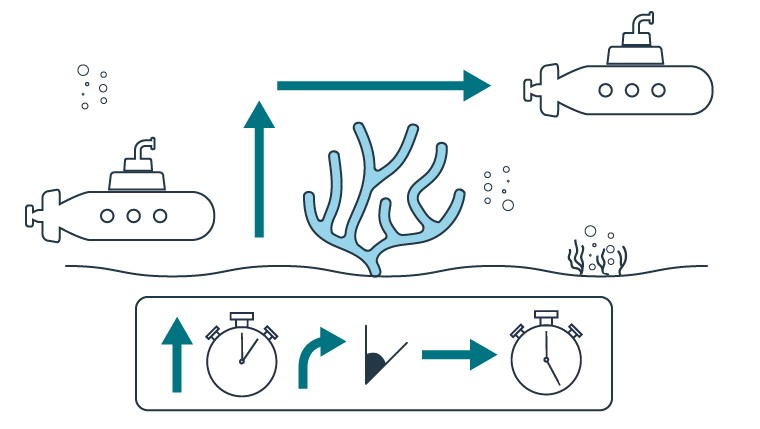


Thanks to GPS, the days of out-of-synch wristwatches wound by hand are fading into memory, as are a reliance on paper maps and strangers asking for directions. GPS has irrevocably changed how we answer the questions “Where am I?” (positioning), “How do I get there?” (navigation), and “How late am I?” (timing).
While GPS may be sufficiently accurate for most day-to-day activities, small enhancements to current PNT capabilities can make a difference in industries where a few extra feet of precision mean building a better natural gas pipeline, finding a missing diver, or locating an adversary’s position. Quantum technologies offer such an improvement, with incremental advancements in GPS and inertial navigation fueling diversity in PNT solutions and providing the customization needed to bring accurate navigation to new areas.
It’s hard to imagine the world today without GPS. With its myriad defense applications and indelible impact on trade, GPS has changed how we think about our place in the world. It was a product of the first Quantum Revolution, leveraging atomic clocks to enable precision timing. As we enter the second Quantum Revolution, scientists and entrepreneurs hope to harness quantum physics in designing and engineering new technologies.
GPS technology stands to be improved in once inconceivable ways. In particular, boosting the precision of the positioning and timing capabilities of GPS could positively impact a range of applications, from surveying to weapons targeting to infrastructure management. In the rare cases where even an improved GPS cannot operate—such as navigating underwater and underground or encountering intentional adversarial interference—new quantum technologies offer an alternative technology solution. Inertial navigation, the process of calculating position without continuous access to reference points, stands to be drastically improved thanks to quantum accelerometers. This advancement promises to open new possibilities in defense and industrial undersea operations and search and rescue.
Both solutions are in the early stages of commercialization, and the mission impact of small changes to GPS precision and new quantum-assisted inertial navigation is worth exploring further.
A working GPS is ultimately reliant on both orbiting satellites and accurate timing. Harnessing time-stamped and location-stamped signals received from nearby satellites, a GPS uses the time it took for the signal to reach it to calculate its distance from the satellites. Combined with information on the satellites’ locations, a GPS determines its own position. Any mistakes in timing can lead to errors in determining position, thus ruining any chance of using a GPS for navigation.
To maintain accuracy, GPS satellites carry precise atomic clocks, which are periodically re-synchronized with a “master clock” on Earth to correct for small errors that gradually accumulate. Improving the precision of atomic clocks or the precision of their synchronization would push GPS past current limits in accuracy.
 GPS-enabled devices find their positions using satellites as referece points. They calculate their distances from the satellites using the delay between signal transmission and arrival.
GPS-enabled devices find their positions using satellites as referece points. They calculate their distances from the satellites using the delay between signal transmission and arrival.
Modern atomic clocks build on the original GPS atomic clocks through their compatibility with high-precision quantum synchronization protocols. Quantum clock synchronization begins with clocks that connect to one another with uniquely quantum interactions. These “quantum connections” make the clocks’ properties interdependent, regardless of their separation. The clocks can exploit this dynamic to achieve robust and high-precision synchronization between satellites and an Earth-bound master clock. As a bonus, current GPS-receiving devices—like a smartphone or car GPS—would not require any modification to harness this upgrade.
Challenges are inherent in creating and maintaining the delicate quantum connections between satellites and Earth—yet they are worth tackling. Bringing precision from the scale of 10 feet down to 1 foot or less would open GPS to new civilian applications in surveying, precision agriculture, and robotics. It would further applications such as weapons targeting and reconnaissance for the military. Improvements in timing would similarly strengthen civilian infrastructure in applications such as communication, utility distribution, and coordination of large-scale financial transactions.
Inertial navigation systems are already known as a potential complementary approach to GPS. Instead of satellites, these systems use accelerometers and gyroscopes to measure changes in motion, and they calculate position based on a previously known location. However, traditional devices accumulate errors too quickly to be practical for most applications. Quantum technologies offer a new solution to this problem.
The leading quantum accelerometers sense motion by leveraging how quantum particles, such as atoms, can behave as waves, like sound or ocean waves. When two waves overlap, they combine to make a new wave. The same is true in the quantum case; forcing atoms to accelerate changes the shape of the combined wave. By measuring the shape of the newly combined wave, the accelerometer can deduce its acceleration. Because the atoms are extremely sensitive to minute changes, quantum accelerometers achieve levels of sensitivity and accuracy that are not possible with traditional systems.
 Devices with inertial navigation system keep track of when they change their speed or direction. From this data, they can calculate their positions.
Devices with inertial navigation system keep track of when they change their speed or direction. From this data, they can calculate their positions.
Quantum accelerometers are in the early stages of commercialization, and full quantum inertial navigation systems are likely not far behind. The high sensitivity of quantum accelerometers means their positioning information remains accurate about ten times as long as that of their non-quantum counterparts. This enables accurate, independent positioning for much longer periods before recalibration becomes necessary. Such independence is key wherever GPS signals cannot reach the receiving device, such as underwater, underground, or as a result of adversarial jamming. Furthermore, when both GPS and quantum inertial data are available, they can cooperate as a single system with higher precision than either would have alone.
Written by Isabella Martinez and Dylan Rudy
Quantum approaches to PNT are advancing quickly toward reality, with the next generation of atomic clocks and the first quantum accelerometers already available on today’s market. As quantum synchronization and inertial navigation move forward, Booz Allen remains at the forefront of innovation by conducting mission-focused, independent research and development. With a long history of work in PNT, our committed team works alongside clients to discern the mission impacts of quantum technologies. By simulating protocols and monitoring hardware capabilities, we identify optimal solutions supporting client missions while continually honing our expertise to enable these missions and address client needs. Whether the mission focuses on redefining success metrics in search and rescue or synchronizing the next generation of satellites, now is the time to develop implementation procedures and prepare for the impact of quantum technologies on positioning, navigation, and timing.